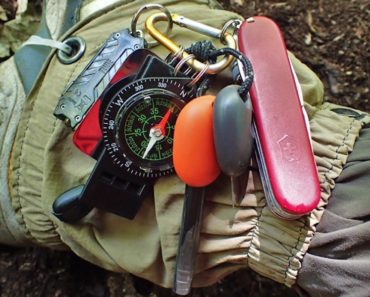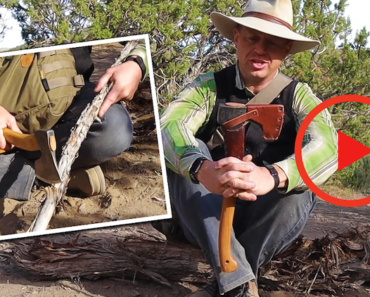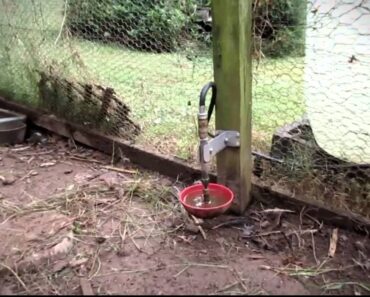My wife Deborah and I take pleasure in enhancing the productivity of our woodlot for our own benefit and the wildlife on our 40-acre property. To achieve this, we solicited the help of several Department of Forestry personnel to improve our land.
Numerous state forestry departments offer free consultations and recommendations to support landowners in enhancing their forested areas. Below are some of the suggested projects, most of which can be undertaken independently.
Crop tree release
Crop tree release (CTR) involves cutting several trees to allow the remaining ones to receive more sunlight, expand their crowns, and produce more hard and soft mast for wildlife. The ideal result is that the remaining trees will have no competition for several yards on all sides.
To achieve this, I usually recommend leaving about 100 to 110 trees per acre, with the trees spaced approximately 20 feet by 20 feet apart. The goal is to identify the best trees to save based on the landowner’s objectives, with white oak often being the top choice due to its high productivity for wildlife and commercial timber.
Although white oak is prevalent in the eastern half of the United States, other members of the Quercus genus, including post oak, chinquapin oak, swamp white oak, and Oregon oak, are found throughout the country and are crucial to wildlife wherever they grow. When conducting a CTR project, it’s important to incorporate a wide variety of mast producers to ensure a productive stand.
Earn Your Food Independence NOW
To begin a CTR project, start by marking which trees to keep and which ones to remove. In our case, the Department of Forestry employees walked through our forest and marked trees to be kept with two red ribbons and trees to be removed with one ribbon. They also considered which way neighboring trees would fall when cut, to avoid retaining a tree that could be damaged by a nearby undesirable one.
While observing the crop tree release (CTR) process, my wife and I were surprised to discover a native American crabapple tree (Pyrus coronaria) growing on our property. Due to the encroachment of red maples (Acer rubrum), red cedars (Juniperus virginiana), and yellow poplars (Liriodendron tulipifera), it had not been receiving sufficient sunlight to produce fruit. However, the removal of selected trees during the CTR process will change that.
The two foresters marked scarlet oaks (Q. coccinea) and some white oaks for removal. Scarlet oaks have a shorter lifespan than other red oak species and are more susceptible to disease. One scarlet oak was cut down despite being healthy, as it was situated between two sturdy white oaks that will now thrive. Even healthy white oaks should be removed if they are competing with nearby trees or if they are malformed.
During the CTR process, we learned to prioritize tree health and diversity. A black locust tree (Robinia pseudoacacia), which we had intended to use for firewood, was saved as it is an excellent pollinator, a nitrogen-fixer, and a soil enricher. We were encouraged to save other great pollinators, such as black cherry (Prunus serotina) and sourwood (Oxydendrum arboreum), during future CTR projects.
Several small dogwoods (Cornus florida) were also left in place as they are best suited as understory trees and provide food for wildlife. Other trees we left in place included a scarlet oak, black gum (Nyssa sylvatica), mockernut hickory (Carya tomentosa), and post oak.
Trees that were removed included red cedars, red maples, green ashes (Fraxinus pennsylvanica), and white ashes (F. americana), as ashes are being destroyed by the emerald ash borer infestation. In addition to white oak species, a diverse woodlot should include red oak species such as Northern red oak (Q. rubra), pin oak (Q. palustris), black oak (Q. velutina), and blackjack oak (Q. marilandica) to ensure a valuable supply of hard mast in case of white oak crop failure.
Hinge cutting
Hinge cutting is a method that offers significant benefits to wildlife, and although CTR is essential for habitat improvement, it is not the only project that can be done. Hinge cutting promotes the growth of ground cover and creates more food for wildlife.
To begin, select a tree with a waist-high diameter between 3 to 8 inches. While red maples are the preferred choice for hinge cutting, redbuds, and red cedars can also be used. Red cedars can provide excellent ground cover as they are bushy evergreens.
However, foresters recommend hinge-cutting red maples since they can become the dominant trees in a woodlot and have less commercial value. Nevertheless, their leaves are a favorite food of deer, so hinge-cutting maples can maximize their benefits. After the trees have been hinge-cut, they provide valuable ground cover for small mammals and songbirds.
To hinge cut a tree, cut it about 75% of the way through, so that the partially severed part remains attached to the base while the tree can be bent over parallel to the ground. This allows the parallel part to still receive nutrients, while wildlife can feed on the tree’s leaves or seeds and find cover among its branches.
Using a handsaw for hinge cutting is recommended, as it needs to be done slowly to avoid cutting too much or too deeply and killing the tree. Trees growing along the edges of food plots, on field borders, along seeded logging roads, and any area without ground cover are all suitable for hinge cutting.
Clear cuts
The foresters recommend small clear-cutting as another project to enhance the woodlots on private land. Clear-cutting involves felling all trees within a specific area at the same time.
Some years ago, I arranged for three clear-cuts ranging from 1 to 5 acres to be made at the back of our property, which added not just diversity but also a way to manage several tree species for wildlife.
Their assessment was accurate as we now have various young forest birds like yellow-breasted chats, white-eyed vireos, and brown thrashers. During the early spring, woodcocks that migrate also visit our land. The newly grown wild blackberry, raspberry, and wineberry bushes in the clear-cut areas provide important soft mast for wildlife and a tasty treat for us in the form of berry pies and cobblers.
In fact, I have discovered wild turkey nests in our berry thickets. I have also created several other small clear-cuts throughout our property. I simply choose a 15-by-15-yard area and clear every tree except a few mast producers. The resulting tangles of explosive growth become a haven for wildlife within a year or two.
Girdling
Girdling is a method to slowly kill large trees without risking damage to nearby trees. This process involves creating parallel, horizontal cuts several inches apart that go deep into the cambium layer. By severing the phloem connection responsible for transporting nutrients from the crown to the roots, the tree is starved of photosynthetic products, leading to gradual root decay and, ultimately, mortality.
Although the tree may appear to be alive for several years after girdling, it will eventually die. One of the benefits of girdling is that it provides nesting habitats for cavity nesters, such as woodpeckers, wood ducks, bluebirds, and tufted titmice, and attracts insects, which songbirds feed on. However, girdling should be avoided for trees like ashes and yellow poplars, as they may develop brittle tops when they start to die, making them hazardous to cut down.
Hack and squirt
The hack-and-squirt technique is a useful tool for landowners, serving both as a means of creating den sites and as a way to eliminate trees that may pose a danger to others. To carry out this project, you will need a hatchet, machete, tomahawk, or axe to make a series of circling cuts in the trunk at chest level, being sure to cut deeply enough to penetrate the cambium layer and create a cup-like incision. After you do so, squirt an herbicide into the incision, and you can also add a surfactant which can enhance the hack-and-squirt treatment’s efficacy.
During a visit to our land, the foresters quickly identified two trees that were ideal for the hack-and-squirt method. One was a large red maple that shaded several young white oaks and a pignut hickory, and cutting it down would likely have damaged one of those hard-mast producers.
The other was a tall Virginia pine that towered over some young oaks growing nearby. In time, the red maple and Virginia pine will become feeding areas for many woodpecker species and potential nesting sites for songbirds that require cavities to lay their eggs. In addition, the hack-and-squirt technique has cleared the way for half a dozen hard-mast producers without damaging them.
Getting rid of invasive species
Eliminating invasive species is one of the major challenges that rural landowners face. Some of the most difficult invasive plants to control include multiflora rose (Rosa multiflora), autumn olive (Elaeagnus umbellata), English ivy (Hedera helix), Japanese honeysuckle (Lonicera japonica), Japanese barberry (Berberis thunbergii), Asiatic bittersweet (Celastrus orbiculatus), common privet (Ligustrum vulgare), and Ailanthus altissima (also known as “paradise tree” or “tree of heaven”).
While I have successfully eliminated Ailanthus and English ivy on my property, I mentioned to the foresters that I am struggling to control the sharp-thorned multiflora rose and barely managing to hold my ground against the rapidly spreading autumn olive and newly appeared Asiatic bittersweet. My current management method involves “cut-and-squirt” – cutting the plant cleanly at the ground level and then applying an herbicide to the base.
The foresters suggested an alternative approach to the standard cut-and-squirt technique. For instance, to deal with multiflora rose, use a handsaw to make rough cuts instead of smooth ones, as it creates more surface area for the herbicide to be absorbed. It is also important to identify the dominant stem as it will transmit the herbicide throughout the entire plant, especially to the roots. This method has been successful in controlling hardy invasive plants.
Concluding
Managing a woodlot is an ongoing responsibility that requires consistent effort and attention to detail. However, the benefits of creating a healthy forest and providing better wildlife habitat are significant, and can make the time and effort invested in woodlot management well worth it. By implementing a few key strategies, you can take better care of your woodlot and make it a more valuable asset for both your needs and the needs of the wildlife that depend on it.
Overall, managing a woodlot is a challenging but rewarding undertaking. By taking steps to maintain proper tree density, control invasive species, and create and maintain wildlife habitat, you can help ensure the health and productivity of your woodlot for years to come.
Whether you’re looking to generate income from your woodlot, provide recreational opportunities for yourself and others, or simply enjoy the natural beauty of your forest, effective woodlot management is a crucial part of achieving your goals.



























